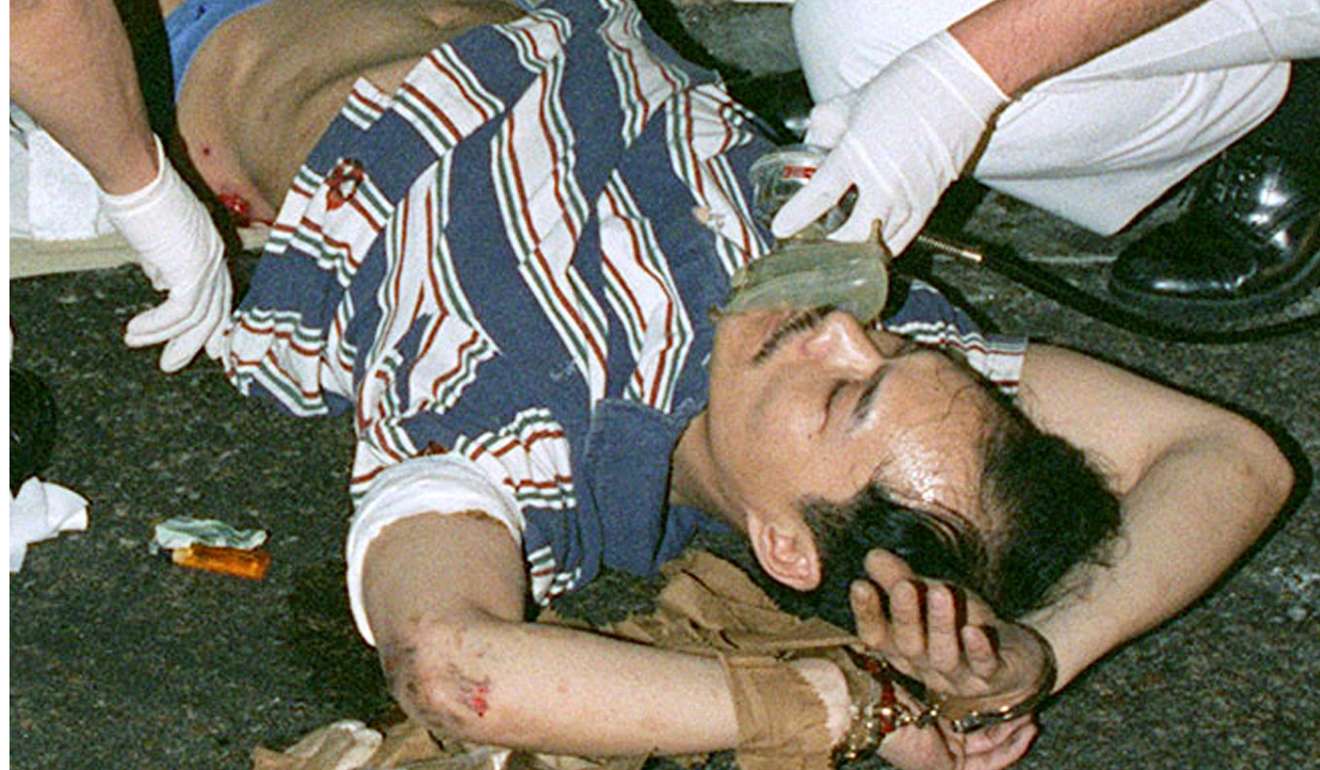“King of Thieves” Yip Kai-foon, who died in Queen Mary Hospital on Wednesday, was one of Hong Kong’s “larger-than-life” crime bosses in the 1980s and 90s who forced the police to change the way they handled organised crime.
‘King of Thieves’ Yip Kai-foon forced Hong Kong police to change tactics and beef up arms
AK-47-toting gangster was involved in numerous raids on jewellery shops; he was eventually brought down amid rumours that he planned to kidnap Li Ka-shing’s son with ‘Big Spender’ Cheung Tsz-keung
PUBLISHED : Wednesday, 19 April, 2017
A veteran police officer recalled to the Post that the arrival of many criminals from Guangdong province to carry out high-profile robberies of jewellery shops prompted the force to expand its structure and beef up its arms.
“The arms and the design of the handgun used by police officers in the 1980s could not be compared to those heavy weapons used by mainland robbers,” the officer, who did not want to be named, said.
“There were not even enough flak jackets for Emergency Unit officers so we had to upgrade our weapons, change our tactics and expand the Organised and Serious Crime Bureau to fight against serious crime.”
The Organised and Serious Crimes Ordinance came into effect in 1995 to strengthen the force’s ability to investigate serious crime including triad-related offences.
It empowered the force to apply to the court for heavier sentences and confiscation of proceeds arising from certain crimes including money laundering.
Yip, who was born in Guangdong, came to the city illegally in 1978 when he was just 17.
He began his gun-toting raids in his early twenties. In October 1984, he led five mainland robbers in a series of jewellery shop raids. Some years after being convicted, he managed to escape after fleeing a toilet at Queen Mary Hospital where he was receiving treatment. He is thought to have fled to the mainland.

Yip returned to Hong Kong in June 1991 to carry out his most audacious raid yet, getting away with HK$10 million worth of gold and jewellery from five shops on a single street in Kwun Tong. Equipped with AK-47 machine guns and pistols, Yip and his gang exchanged around 54 shots with police.

A violent raid on a Nathan Road jewellery shop in January 1993 bore all the hallmarks of “mastermind” Yip. A Post report from the following day captured the chaos: “The gang fired more than 30 shots mostly from the AK-47s, with officers returning 17 shots during several encounters that saw chaos from Mong Kok to Hung Hom as bystanders dived for cover and motorists abandoned their vehicles amid the hail of bullets.”
In his final act, he was arrested in May 1996 after exchanging gunfire with police in Kennedy Town after sneaking back into the city on a vessel loaded with firearms and explosives amid rumours that he planned to kidnap the son of tycoon Li Ka-shing with “Big Spender” Cheung Tsz-keung.

The policeman who shot Yip in the spine during the gunbattle, which left him wheelchair-bound, only knew he had shot Hong Kong’s most wanted man two days after the battle.
Yip was sentenced to 41 years in prison in 1996 for possessing arms and ammunition, possessing 1.8kg of explosives and escaping from custody. It was later reduced to 36 years and three months on appeal.
The lives of Yip and two other mobsters – Kwai Ping-hung and Cheung Tsz-keung – inspired the movie Trivisa, which recently won the Best Film award at the 36th Hong Kong Film Awards.
No comments:
Post a Comment
Comments always welcome!